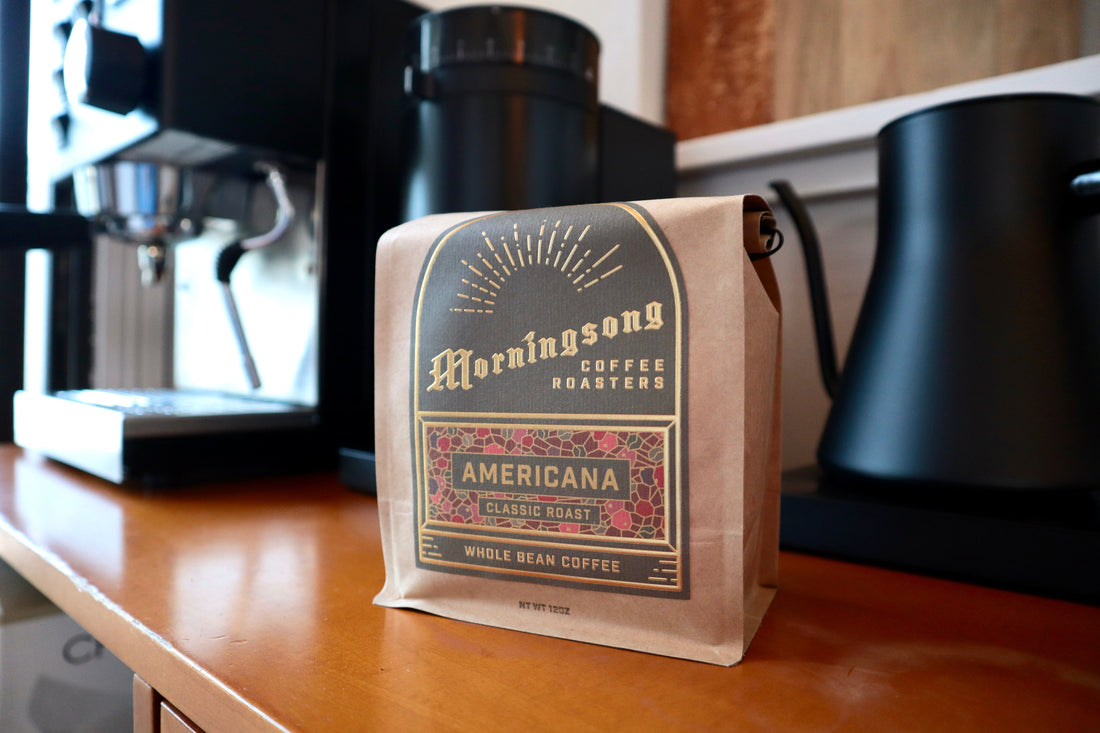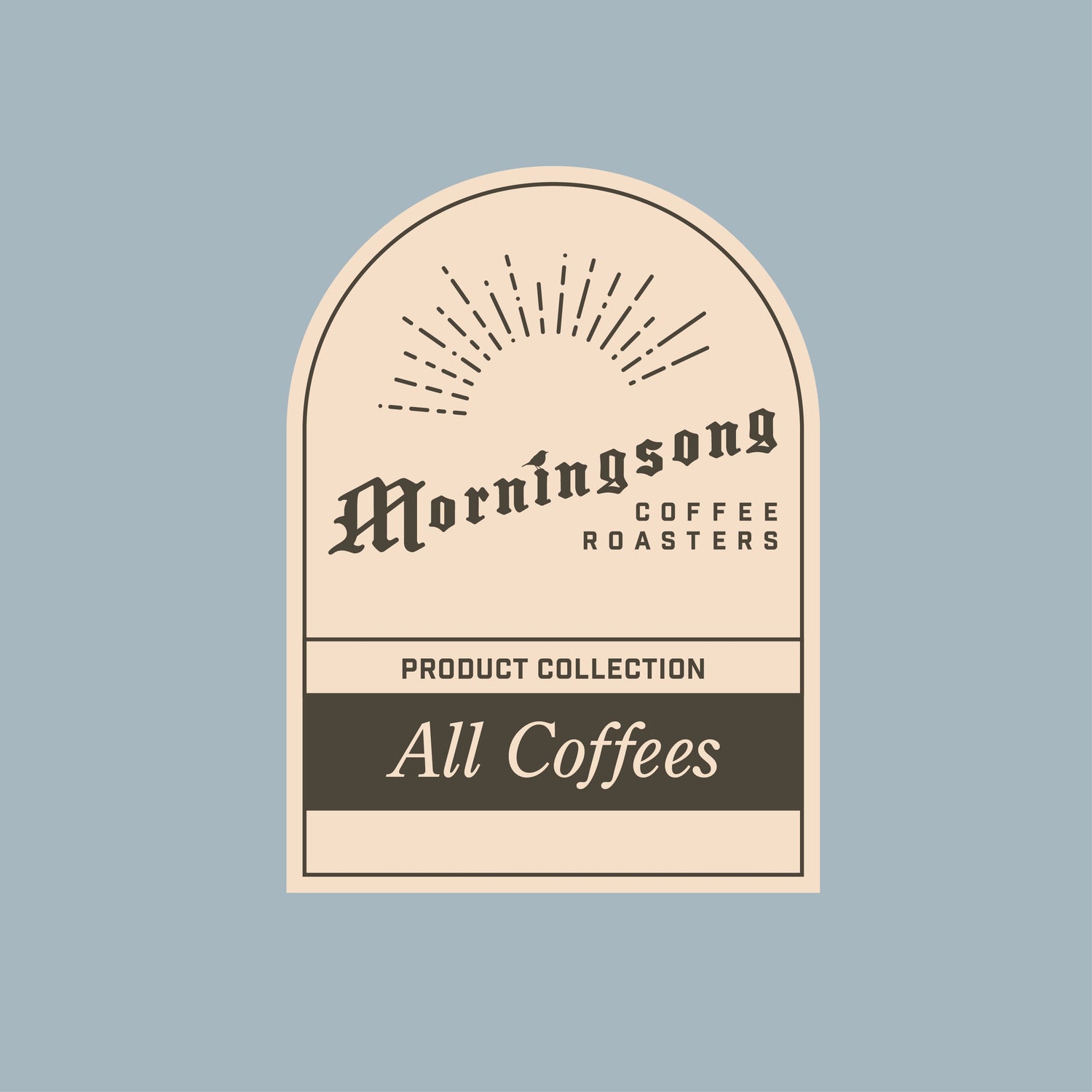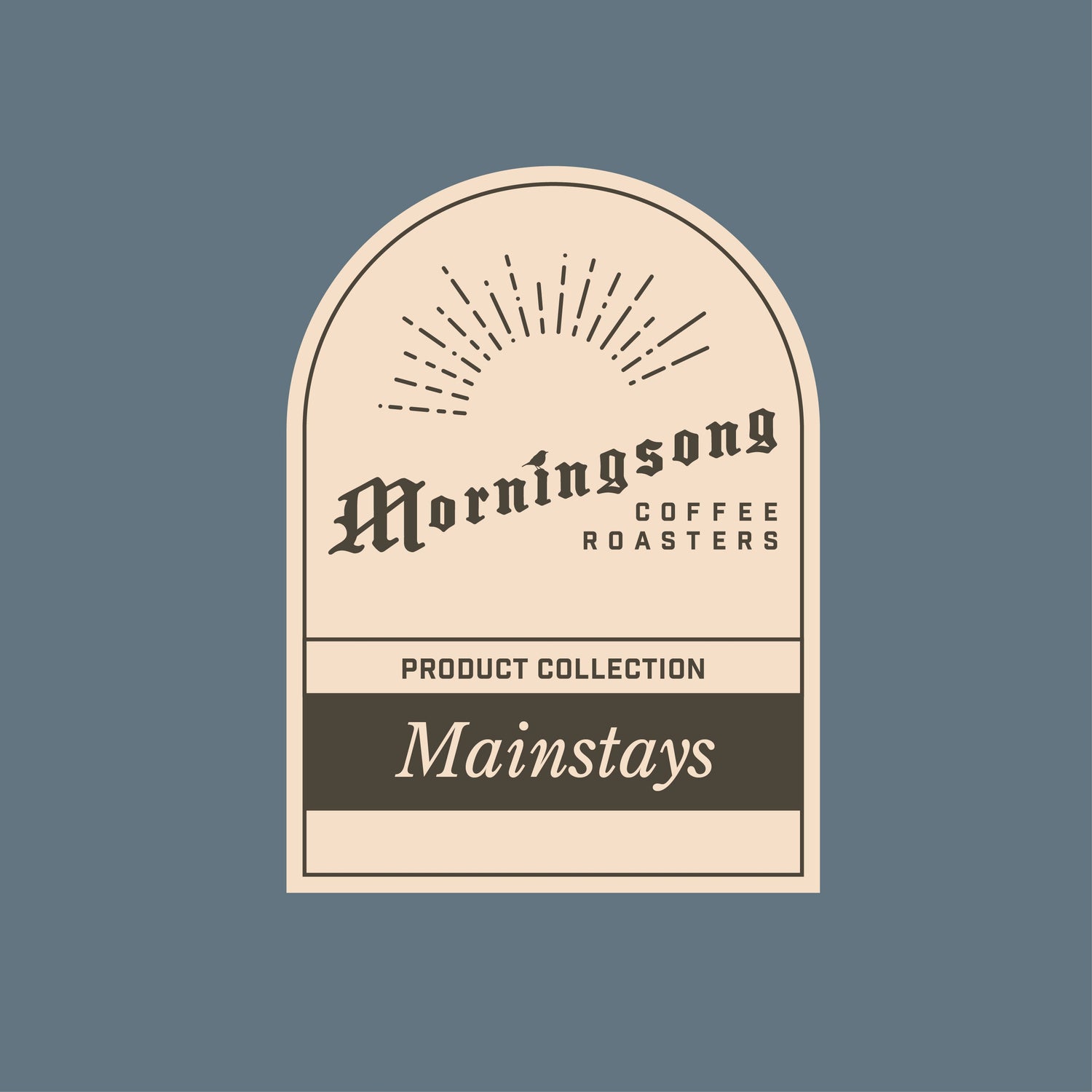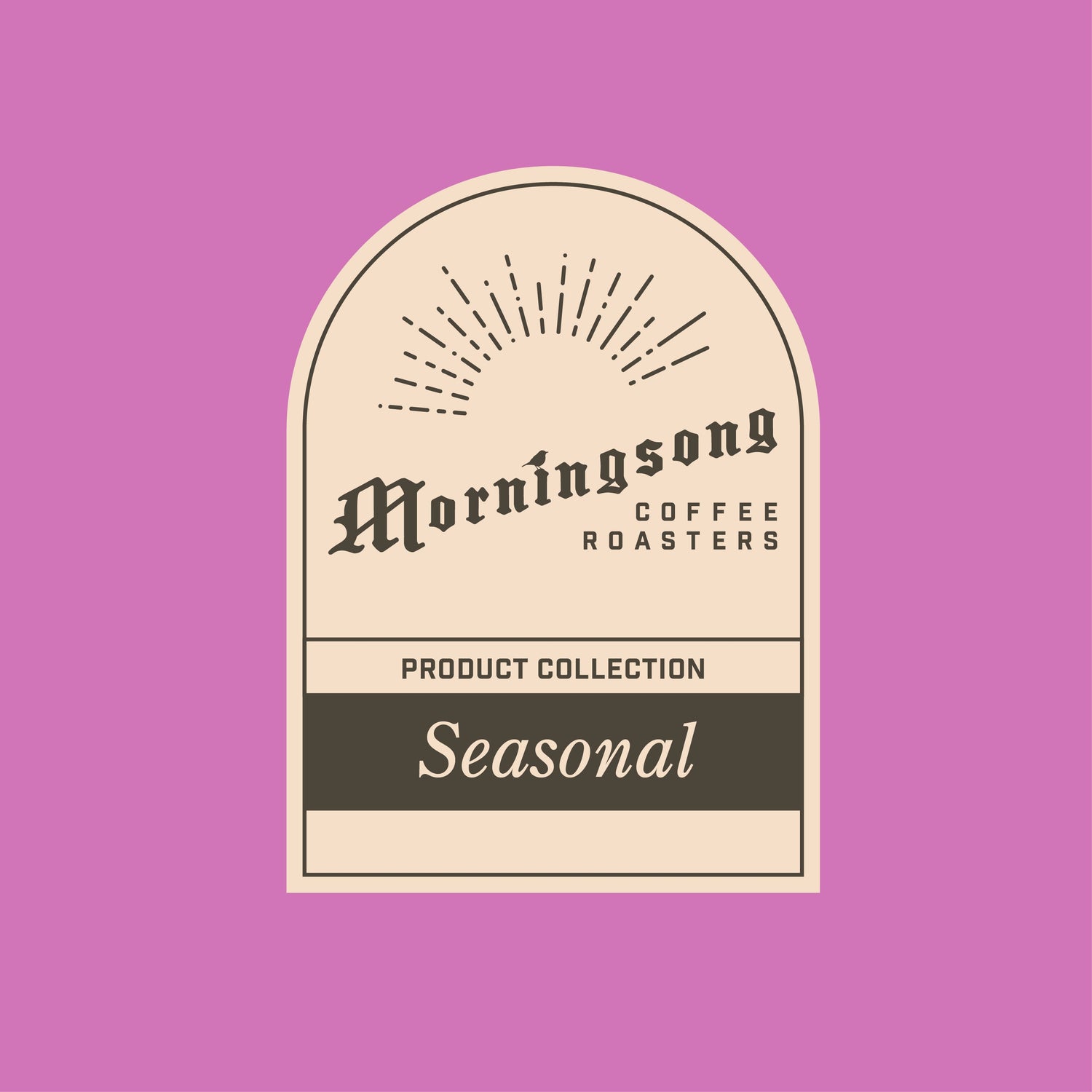
Americana: The Everyman's Coffee at A Higher Standard
Andrew GrassmickShare
At Morningsong, we have very high standards at every stage….sourcing, roasting, evaluation, and quality control. The biggest difference you will notice because of these standards is exceptional clarity, sweetness, and cleanliness in the cup, and allowing the very best of a coffee’s inherent qualities to shine through. In high-end specialty coffee, these are characteristics that are not easily achieved.
When people think about high-quality roasting, they usually think of light-roasting rare varieties to bring out distinct fruit flavor notes and clarity. While this is true and much of what we do at Morningsong, we also take pride in understanding different styles in roasting for certain brew methods and taste preferences. It’s very easy to get locked into a certain style of coffee roasting. In fact, I think it’s exceptionally rare for a roaster to have a broad range of styles across their menu and actually do all of those coffees well. The principles and methods that help to achieve great light-roasted coffee are not the same ones that get good results in darker coffee. Unfortunately, most roasters don’t give the darker coffees on their menus the same attention to detail as their top shelf offerings. At Morningsong, we want to change that...and Americana is our attempt to provide a slightly darker coffee that is actually delicious.
 The first question one might ask after hearing that is “Why? If the best coffee is best expressed with a lighter roast, why would you want to offer something darker?” There are a few reasons. One is that certain brew methods and drinks work better with darker coffee. Darker coffee is more soluble and that can be beneficial for certain methods that have shorter brew times and/or lower temperatures. Darker coffee also comes through more in milk-based drinks. While you can pull a beautiful shot of espresso with a lightly-roasted washed Ethiopian coffee, it will all but disappear in a latte. Similarly, if you simply must put milk or cream in your coffee, a darker roast will not be drowned out as easily.
The first question one might ask after hearing that is “Why? If the best coffee is best expressed with a lighter roast, why would you want to offer something darker?” There are a few reasons. One is that certain brew methods and drinks work better with darker coffee. Darker coffee is more soluble and that can be beneficial for certain methods that have shorter brew times and/or lower temperatures. Darker coffee also comes through more in milk-based drinks. While you can pull a beautiful shot of espresso with a lightly-roasted washed Ethiopian coffee, it will all but disappear in a latte. Similarly, if you simply must put milk or cream in your coffee, a darker roast will not be drowned out as easily.
The higher solubility also helps to make it more forgiving to brew at home. If you have less-than-ideal coffee equipment, water, and methods…a more soluble coffee is less likely to give you bad results. You won’t get that A+ life-changing cup of coffee but it’s less likely you’ll get a D- terrible cup as well. Coffee is not a finished product, so you can make a bad cup of coffee with great coffee beans. Light-roasted coffee can easily be too sour or acidic when not brewed properly.
Finally, some people just prefer a darker coffee. While I do think that many have been conditioned to drink really dark and (to be honest) really bad coffee it’s not wrong to have a preference for roast-driven coffee. What we are trying to do with Americana and any other coffee roasted for this style is to favor velvety texture and lower perceived acidity while retaining as much good as we can from the green coffee itself. You have to make a trade-off here. There is no getting your cake and eating it too. However, we think that choosing the right green coffees and applying the same meticulous roasting and QC standards we use for our top-shelf coffees to this one can yield an equally exceptional coffee in its own right.
 The green coffees chosen for Americana are the most affordable on the menu but that does not mean they aren’t high-quality coffees. In fact, they are still some of the very best coffees in the world. For a darker roast, however, it would be silly to use something super high-end because there is no getting around that you’ll be covering over the delicate attributes of the coffee. We choose coffees that are uniform, defect-free, have lower acidity, and reach their best expression with more roast development (read “darker”). One coffee region we’ve come to love for this purpose is Chiapas, Mexico. We’ve found several coffees that have subtle stone fruit and honey when roasted lighter but develop rich chocolate and baking spices as well when taking the roast development further. There is still some pleasant acidity (a good thing) but it is easily tamed and rounded with the right roast approach. All the coffees in the blend are chosen with this criteria in mind. Many of these coffees tend to come from Latin America which is part of the reason for the name “Americana”. The other reason is an homage to the heritage of coffee in America before the advent of specialty coffee when coffee was simpler. While we celebrate and are enamored by all the nuances and uniqueness of specialty coffee, we see the value of enjoying a darn good cup without the fuss.
The green coffees chosen for Americana are the most affordable on the menu but that does not mean they aren’t high-quality coffees. In fact, they are still some of the very best coffees in the world. For a darker roast, however, it would be silly to use something super high-end because there is no getting around that you’ll be covering over the delicate attributes of the coffee. We choose coffees that are uniform, defect-free, have lower acidity, and reach their best expression with more roast development (read “darker”). One coffee region we’ve come to love for this purpose is Chiapas, Mexico. We’ve found several coffees that have subtle stone fruit and honey when roasted lighter but develop rich chocolate and baking spices as well when taking the roast development further. There is still some pleasant acidity (a good thing) but it is easily tamed and rounded with the right roast approach. All the coffees in the blend are chosen with this criteria in mind. Many of these coffees tend to come from Latin America which is part of the reason for the name “Americana”. The other reason is an homage to the heritage of coffee in America before the advent of specialty coffee when coffee was simpler. While we celebrate and are enamored by all the nuances and uniqueness of specialty coffee, we see the value of enjoying a darn good cup without the fuss.




